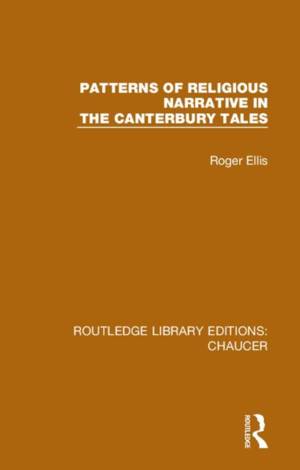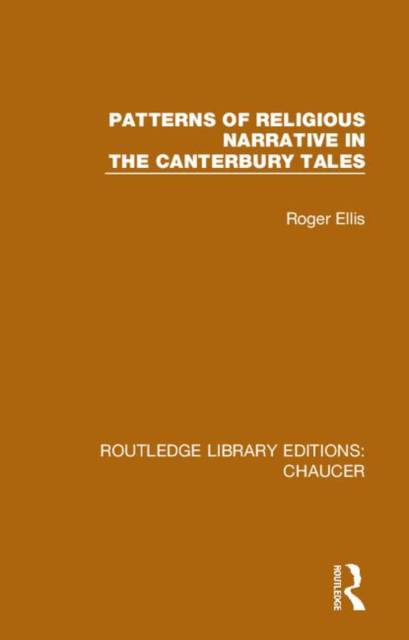
- Retrait gratuit dans votre magasin Club
- 7.000.000 titres dans notre catalogue
- Payer en toute sécurité
- Toujours un magasin près de chez vous
- Retrait gratuit dans votre magasin Club
- 7.000.0000 titres dans notre catalogue
- Payer en toute sécurité
- Toujours un magasin près de chez vous
Description
Originally published in 1986. This study asks 'What problems confront the narrator of a religious story?' and 'What different solutions to those problems are offered by the religious narratives of The Canterbury Tales?' The introduction explains the grounds for inclusion of the tales here studied then examined in three sections. The first includes the tales of the Clerk, Prioress and Second Nun, and Chaucer's Melibee, and explores the parallels between the production of a religious narrative and that of a faithful translation. The second considers how the tales of the Man of Law, Monk and Physician, though formally similar to those in the first section, subvert the offered parallel by their creation of narrators who actively mediate them to their audience, and who seem as concerned with the projection of their own personalities as with the transmission of the given story. The final section shows how the tales of the Pardoner and Nun's Priest highlight the dilemma and provide distinctive resolutions. The whole study aims to explore the dynamic relationships that exist between two contrasting positions: an artist's commitment to the authority of a given story and his need to assert himself over it.
Spécifications
Parties prenantes
- Auteur(s) :
- Editeur:
Contenu
- Nombre de pages :
- 324
- Langue:
- Anglais
- Collection :
- Tome:
- n° 5
Caractéristiques
- EAN:
- 9780367357283
- Date de parution :
- 04-10-19
- Format:
- Livre relié
- Format numérique:
- Genaaid
- Dimensions :
- 138 mm x 216 mm
- Poids :
- 759 g

Les avis
Nous publions uniquement les avis qui respectent les conditions requises. Consultez nos conditions pour les avis.






